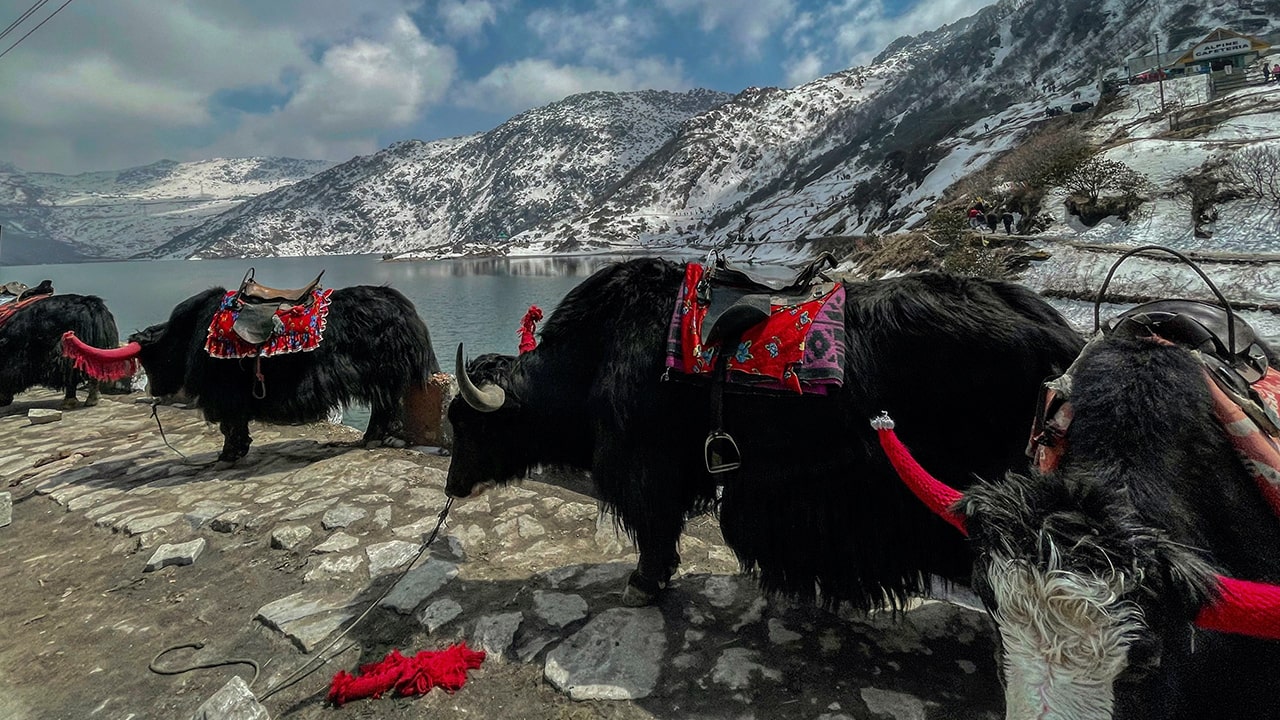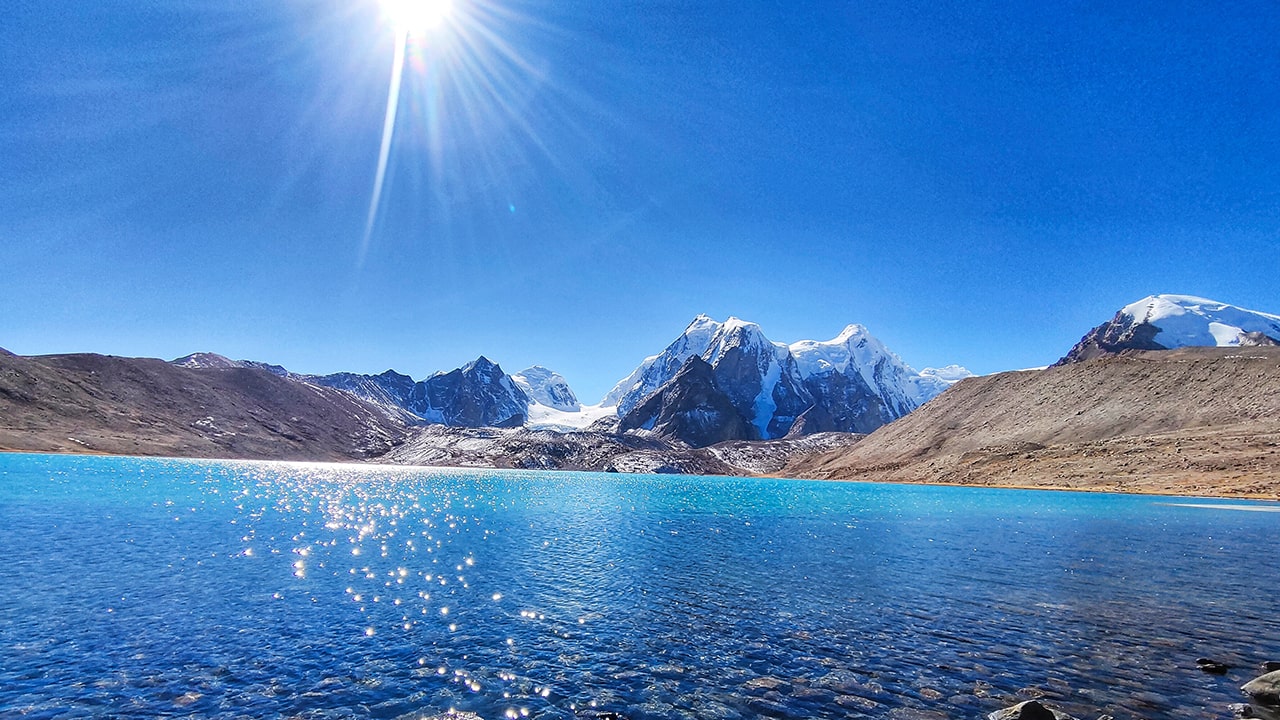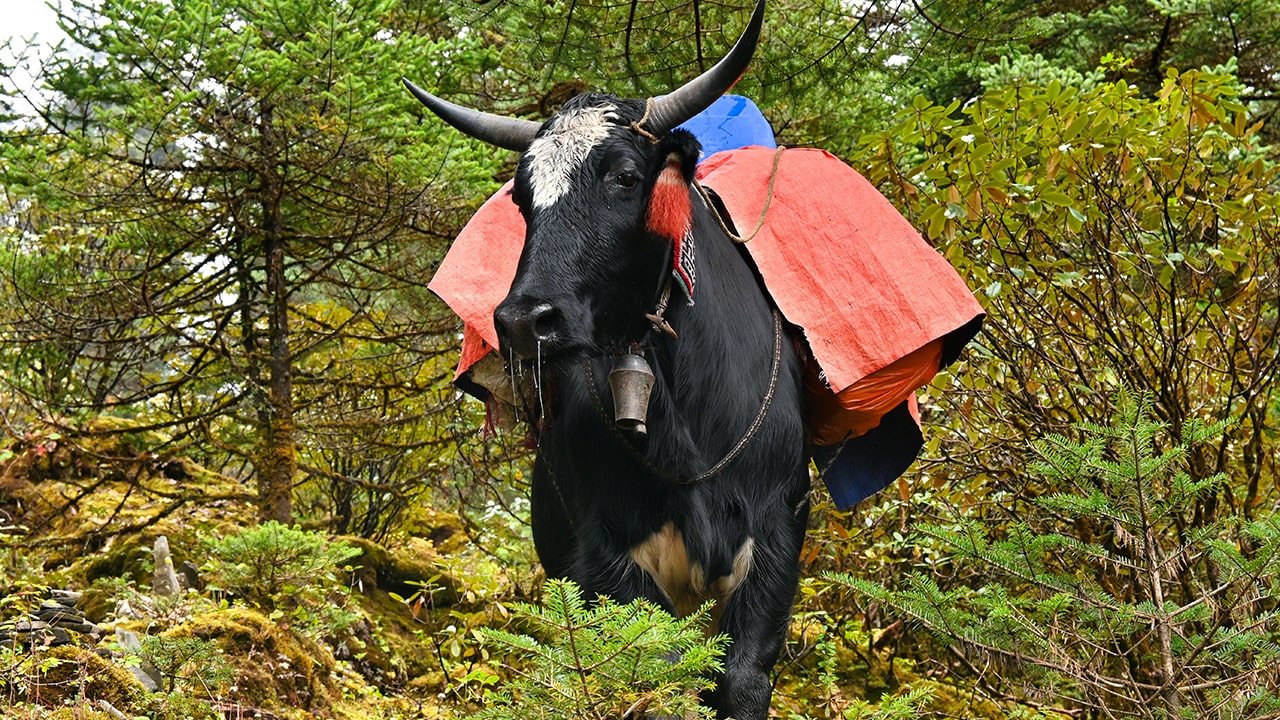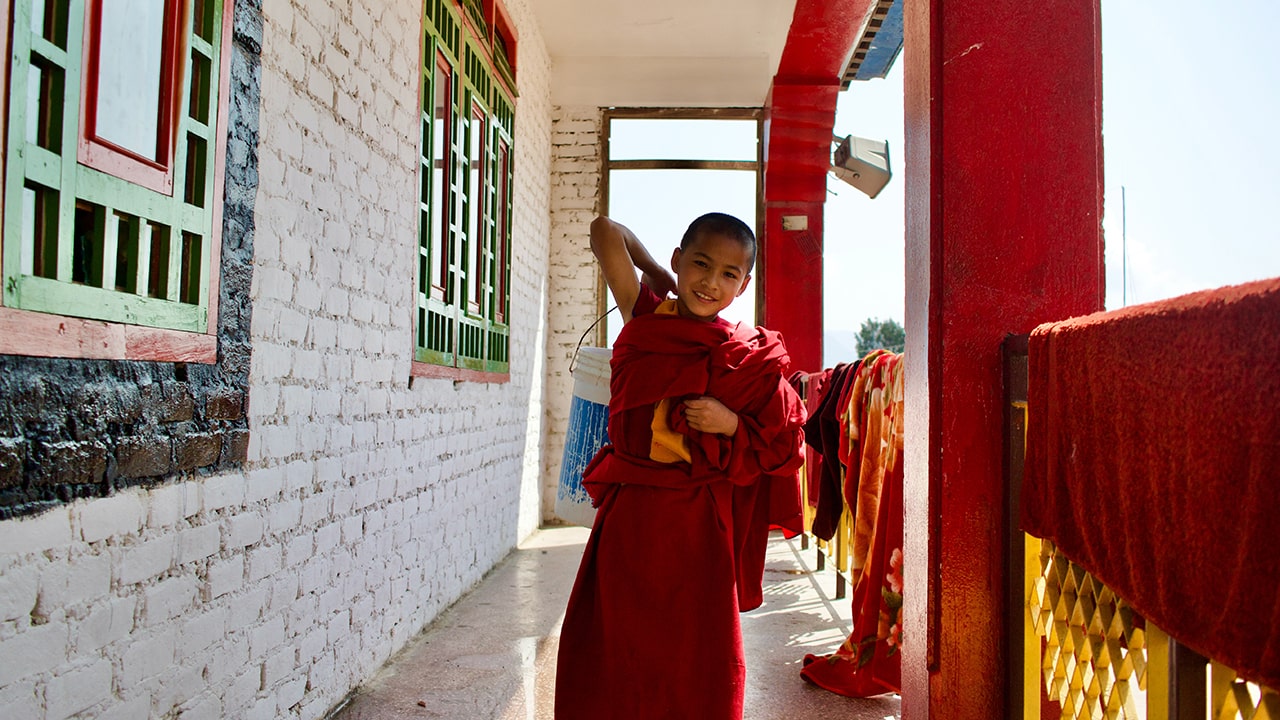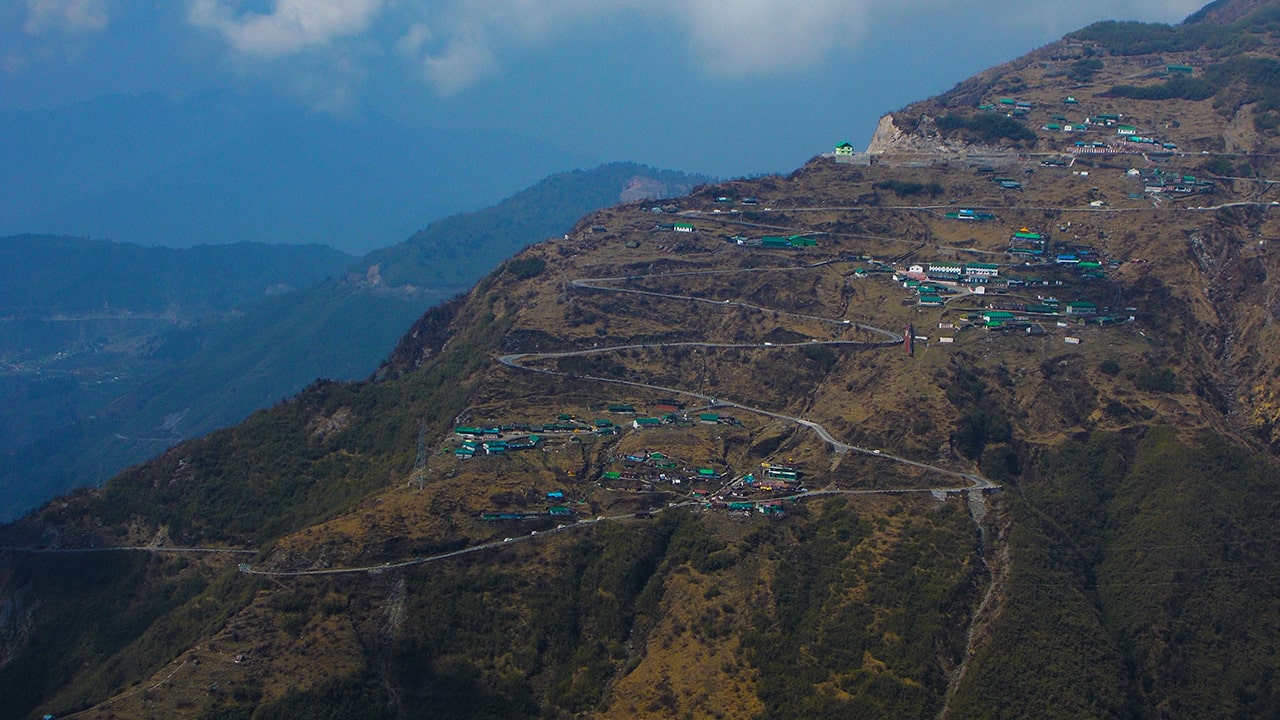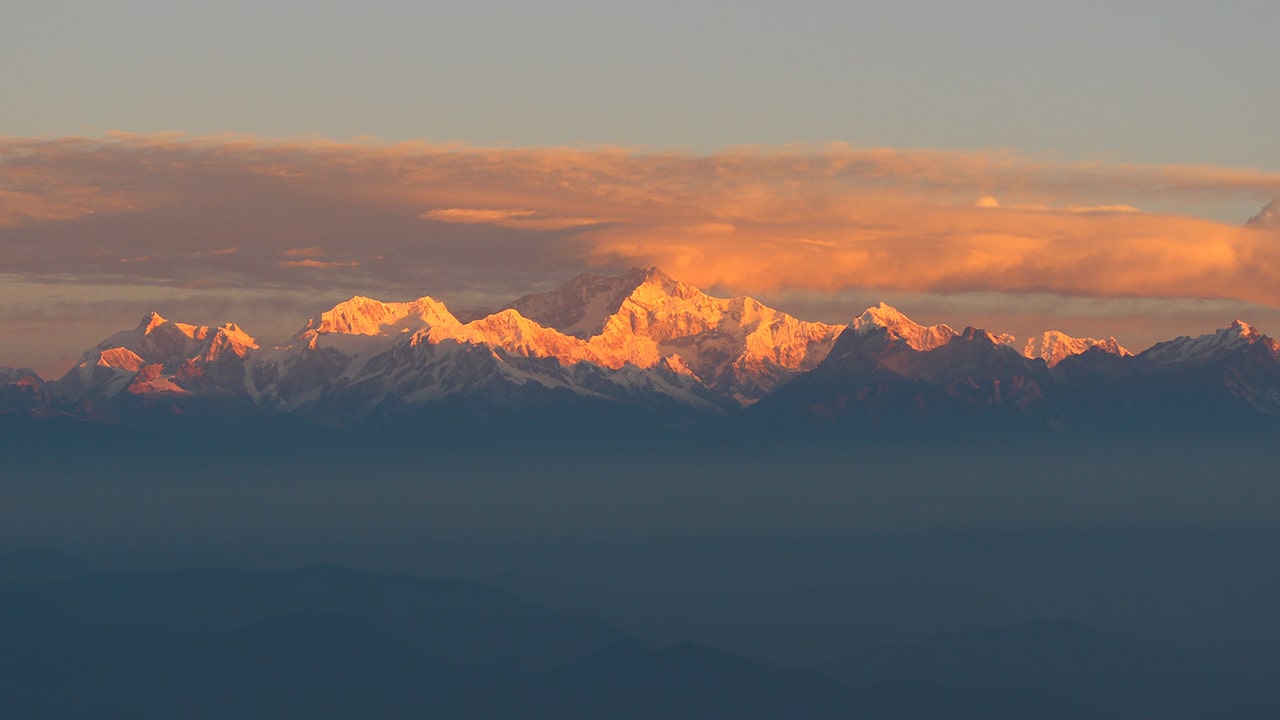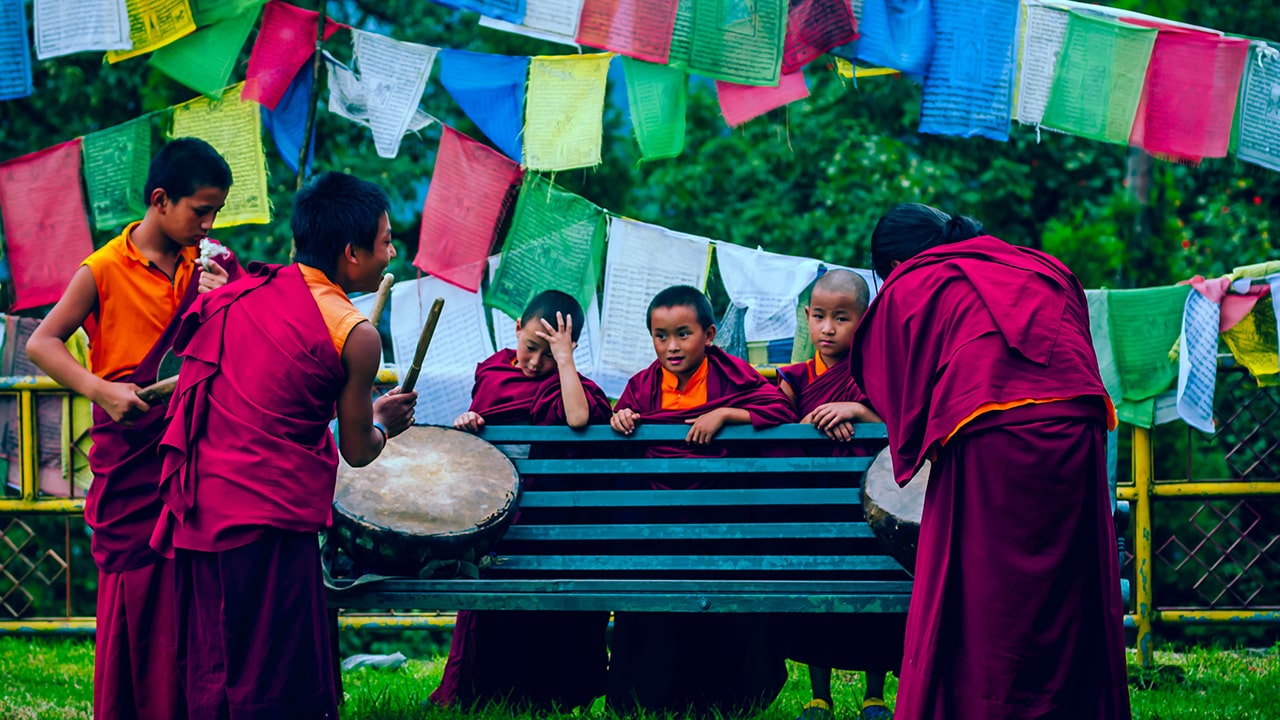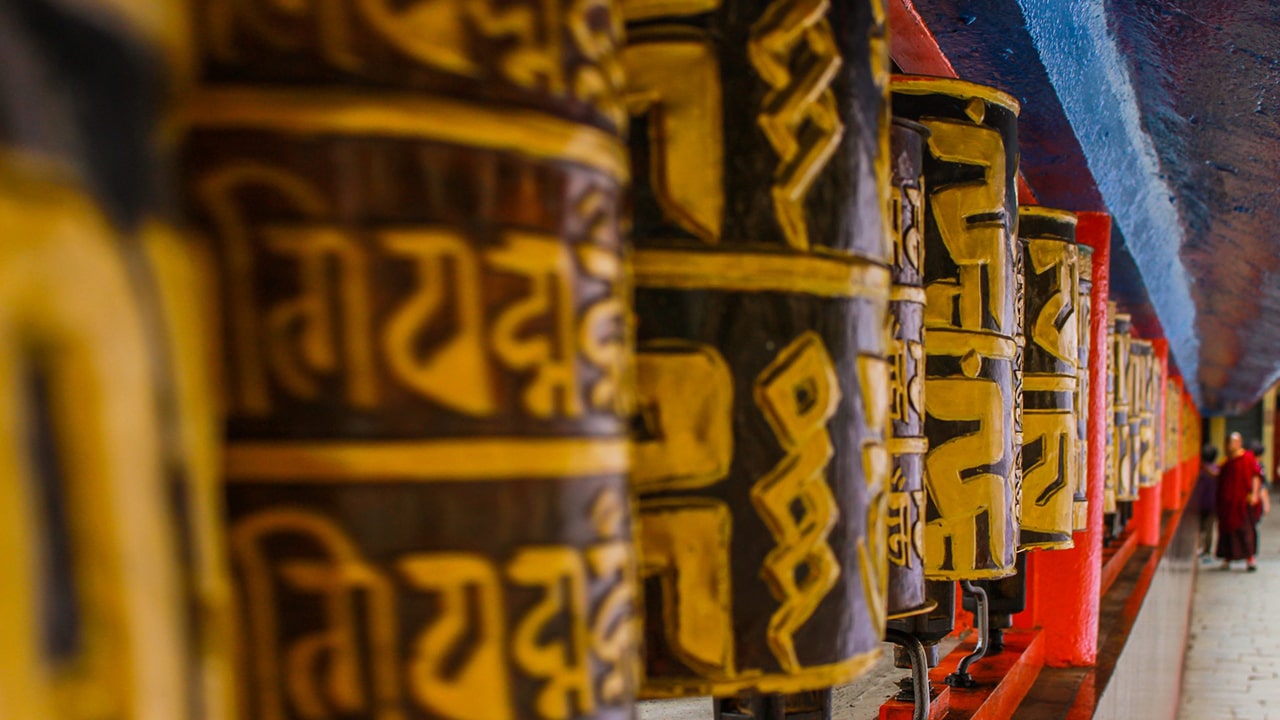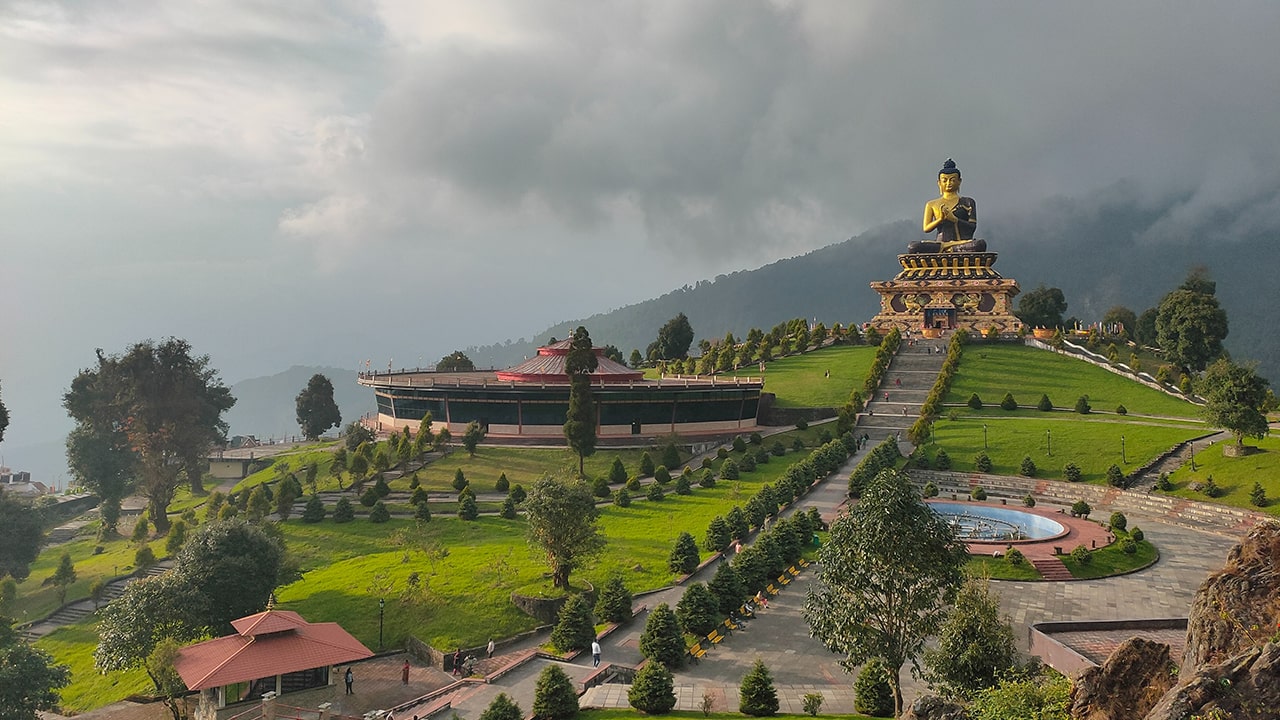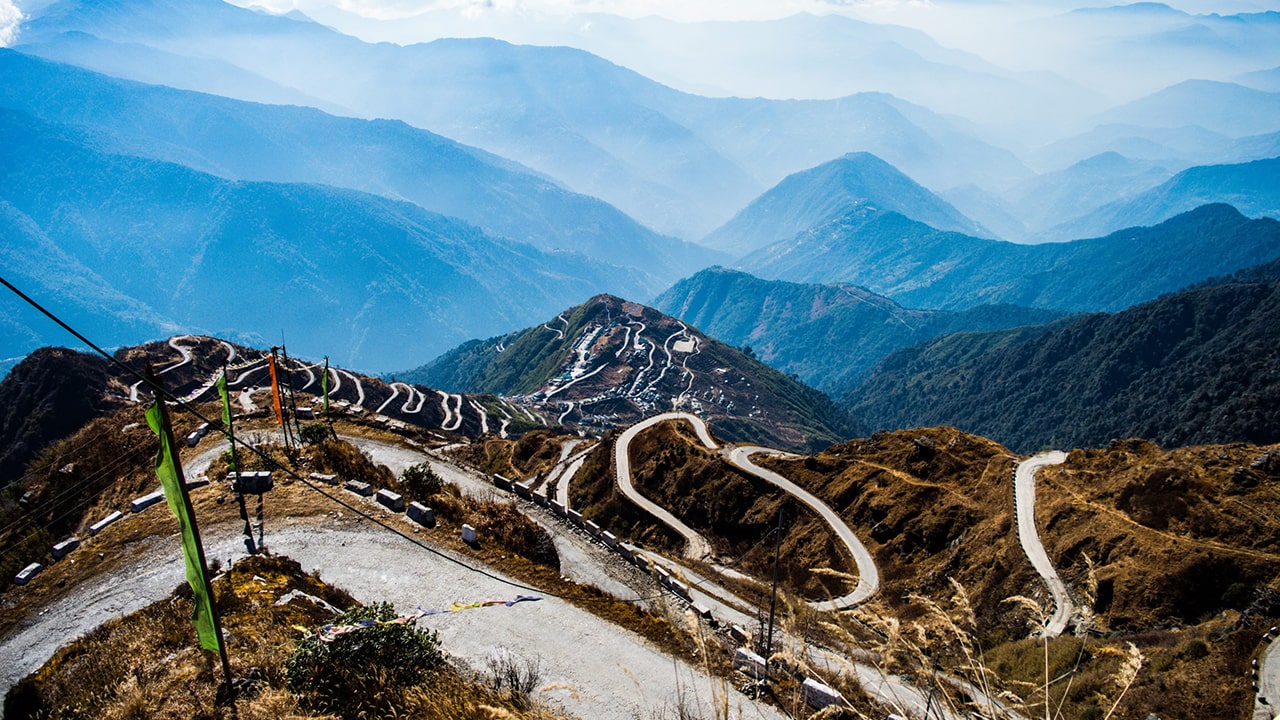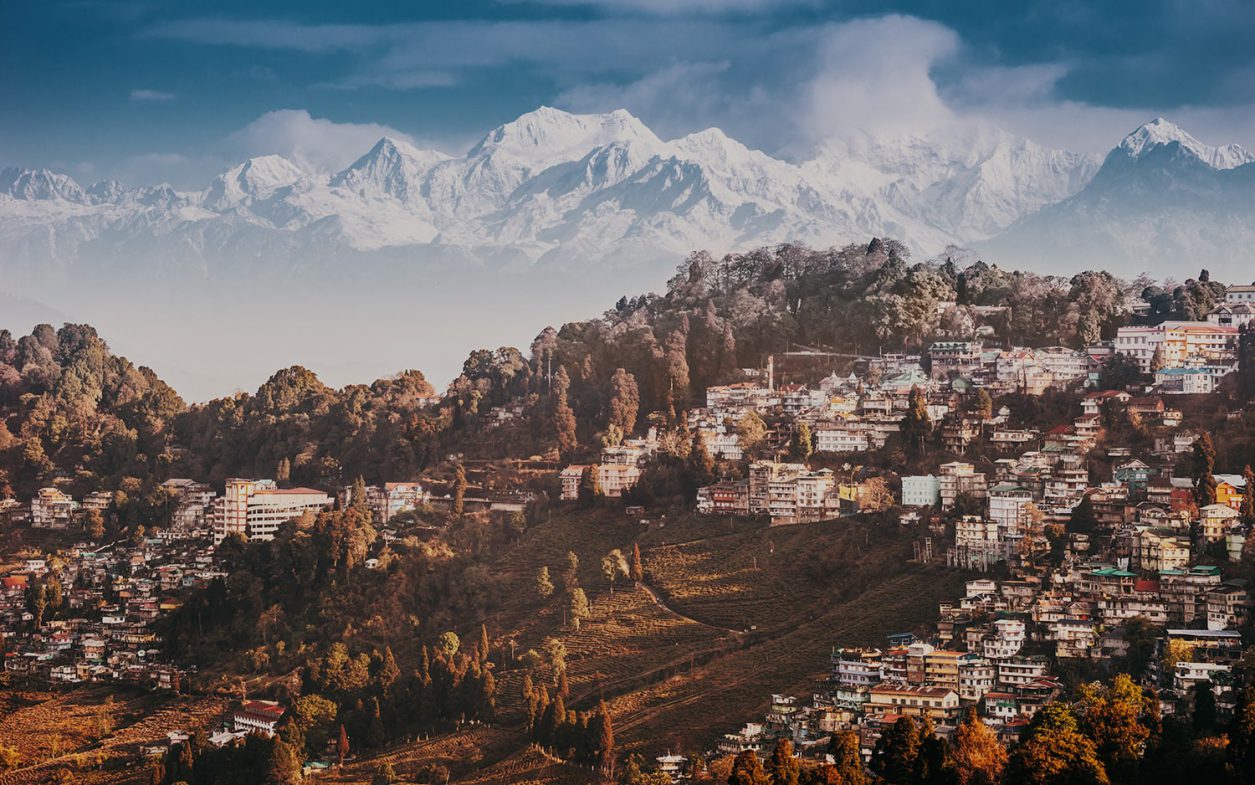
art of travel
Monthly Musing
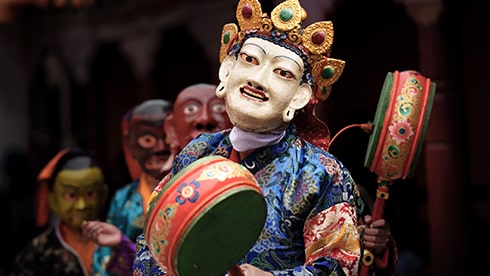
With the Kanchenjunga as Witness
The Limboo Homestay in Yoksum is an oddity in Sikkim. The charming family from the Limboo community who runs the homestay in West Sikkim are vegetarians and they don’t serve meat in their homestay. This came as a surprise for one of our explorers from the Destination Knowledge Centre who stayed there for 3 nights and almost carried pork as a gift for the family. The Limboos, as a community, are voracious meat-eaters. No festival for them is complete unless a pig is slaughtered. Our explorer was told by the wife that this is because of their Guru (spiritual master) who preaches non-violence as a key to a happy life. “So you are Buddhist?” “Well, we are. But we also have our protector deities, we have our shamans, we have the blessings of Mount Kanchenjunga (the third highest mountain in the world) and we have our Guru. So we combine everything and try to lead a happy contented life”.
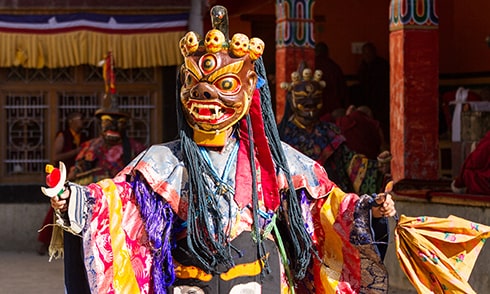 This is interesting because Yoksum was where the Kingdom of Sikkim was established in the mid-17th century by the Three Patron Saints from the Nyingmapa sect, the oldest school of Tibetan Buddhism who were forced out by the 5th Dalai Lama when he assumed full control of Tibet and its religious institutions with the help of the Mongols. They enthroned the first Chogyal (King) of Sikkim in Yoksum whose line continued to rule Sikkim till it became a part of India in 1975. Lhatsun Chenpo Namkha Jigme, one of the three patron saints while converting the indigenous communities to Buddhism didn’t interfere with or challenge the already prevalent shamanic traditions where the land was sacred, where ancestral gods and the protector deities resided within the landscape and its mountain peaks, and where the cause of illness and misfortune was to be found within this shamanic worldview of the locals.
This is interesting because Yoksum was where the Kingdom of Sikkim was established in the mid-17th century by the Three Patron Saints from the Nyingmapa sect, the oldest school of Tibetan Buddhism who were forced out by the 5th Dalai Lama when he assumed full control of Tibet and its religious institutions with the help of the Mongols. They enthroned the first Chogyal (King) of Sikkim in Yoksum whose line continued to rule Sikkim till it became a part of India in 1975. Lhatsun Chenpo Namkha Jigme, one of the three patron saints while converting the indigenous communities to Buddhism didn’t interfere with or challenge the already prevalent shamanic traditions where the land was sacred, where ancestral gods and the protector deities resided within the landscape and its mountain peaks, and where the cause of illness and misfortune was to be found within this shamanic worldview of the locals.
His ritual text “Nesol”— meaning “an offering to powerful sacred places” was a celebration of Sikkim as sacred hidden land and an offering to Mount Kanchenjunga, Sikkim’s mountain deity, and to all the deities of the land. The Nesol is still one of the most sacred and important rituals in Sikkim, as much in the Buddhist monasteries as in the private homes of the locals.
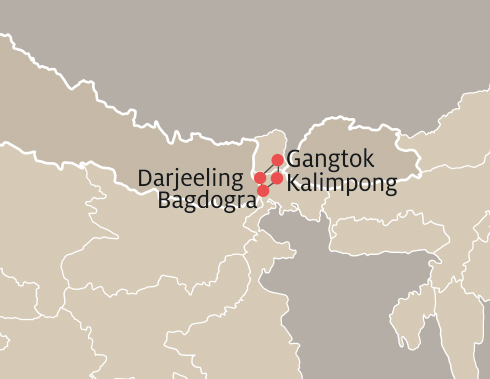 The fact that the shamanic worldview of Sikkim remains unchallenged till date is not only due to the tolerance and inherent shamanic nature of Nyingmapa Buddhism which dominates the religious and spiritual space. The most respected Sikkimese Buddhist masters were not reincarnated monks of powerful celibate monastic orders such as that of the Dalai Lama. They were farmers who led a married life and were shamanic practitioners better known for their non-conformity and irreverence towards any form of authority. The most important state ritual of Sikkim is Pang Lhabsol—meaning “offering to the deities of the higher elevations”—the celebration of Mount Kanchenjunga, once treated as a witness for all socio-economic pacts by the different communities of Sikkim. Pang Lhabsol which follows Lhatsun Chenpo Namkha Jigme’s ritual text Nesol is very much a national shamanic ritual in the sense that it celebrates the renewal of Sikkim’s relations with the sacred land, its history, people, and protector deities every year.
The fact that the shamanic worldview of Sikkim remains unchallenged till date is not only due to the tolerance and inherent shamanic nature of Nyingmapa Buddhism which dominates the religious and spiritual space. The most respected Sikkimese Buddhist masters were not reincarnated monks of powerful celibate monastic orders such as that of the Dalai Lama. They were farmers who led a married life and were shamanic practitioners better known for their non-conformity and irreverence towards any form of authority. The most important state ritual of Sikkim is Pang Lhabsol—meaning “offering to the deities of the higher elevations”—the celebration of Mount Kanchenjunga, once treated as a witness for all socio-economic pacts by the different communities of Sikkim. Pang Lhabsol which follows Lhatsun Chenpo Namkha Jigme’s ritual text Nesol is very much a national shamanic ritual in the sense that it celebrates the renewal of Sikkim’s relations with the sacred land, its history, people, and protector deities every year.
Routing: Bagdogra – Darjeeling – Gangtok – Kalimpong – Bagdogra
What’s New

Travel Diaries – Majestic Gir
By Lovleen Sagar
Gir’s rich biodiversity, success in conservation, and pride in being the last bastion of the Asiatic lion make it an exceptional destination. This patch of forest on the Western edge of India sees a curious coexistence of man and beast, tribal and ranger. With the reopening of Keshod airport and the emergence of numerous boutique properties, Gir has gained popularity as a luxury destination for wildlife enthusiasts. One of the latest luxury properties to come up in this area is Aramness, a safari lodge located on the fringes of the Gir National Park that captures the spirit of Gujarat.
Lovleen Sagar – Senior Vice President, had the opportunity to visit Gir and stay at Aramness. We are delighted to share the first-hand report on her exploratory trip to Gir with you.
Please click here to read the report: The DKC Travel Diaries – Gir
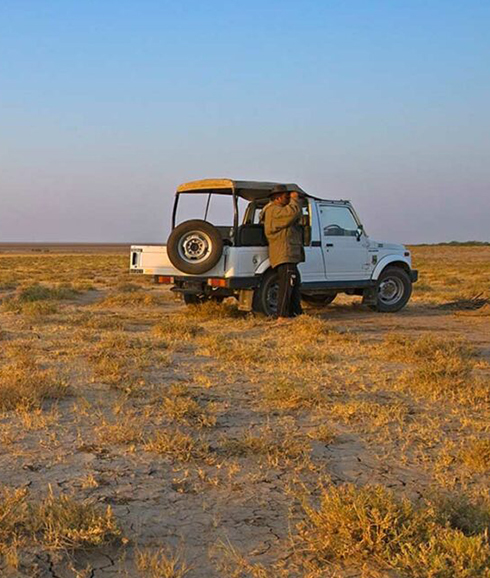
Rann Riders by Kaafila
Another interesting destination in the state of Gujarat is the bleached flat lands of the Little Rann of Kutch. The ‘Little’ Rann of Kutch is a 4950 sq. km. saline desert that was declared as a protected area to conserve the ‘Gudkhur’ or the endemic Asiatic wild ass. The people here are a mix of settled farmers and nomadic pastoralists from various tribes who visit the Rann following the cadence of the seasons, seeking rich pastures and fallow fields. The best accommodation option available here is Rann Riders by Kaafila.
Completely refurbished and getting ready to cater to guests from around the world, Rann Riders will now be managed by Kaafila Camps. Situated in a tranquil rural setting near Dasada Village, this eco-village resort is a green sanctuary on the edge of the Little Rann of Kutch. The twenty-five cottages, whose style is reminiscent of the Bajania Kooba dwellings and the Rabari shepherds’ bhunga structures, have been divided into three categories. With its primary focus on nature and wildlife, Rann Riders serves as an ideal base to explore the Little Rann with its rich and unique community of birds and animals – including the highly endangered Asiatic Wild Ass. The resort will be fully operational from October onwards.
Stories from India
Shekhawati Paintings, Shekhawati, Rajasthan
Shekhawati, or the Hamptons of Rajasthan, is famous for its eccentrically muraled buildings including temples, cenotaphs, public places, and lavish mansions of rich merchants. While frescoes are common in India, what makes those in Shekhawati stand out is the curious mix of the mythological and the modern giving rise to a bizarre but captivating open-air art display.
These frescoes are several centuries old and yet leave you spellbound with their vivid colours and imaginative narratives. They used a unique method of painting on wet plaster that not only gave a marble-like glaze to the walls and floors, but also kept them cool in the sweltering summers.
The frescos and murals that decorate the walls of the buildings in Shekhawati depict many modern elements such as motorcars, airplanes, and even Jesus Christ smoking a cigar. The merchants who went on business trips across the world and saw the modern inventions narrated these themes to the local artists who in turn represented these to the best of their abilities on the walls of the manors and temples.
The entire region with its beautifully surreal frescos and incredible mansions has earned itself the epithet of the largest open-air museum that is sure to leave one speechless.
Sustainability and Us
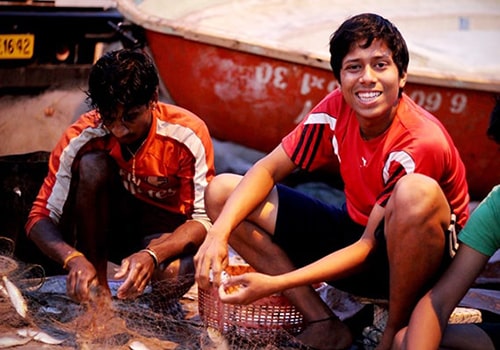
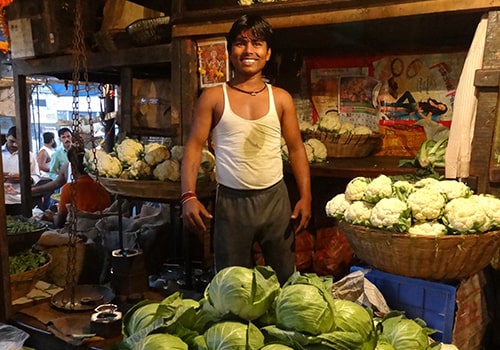
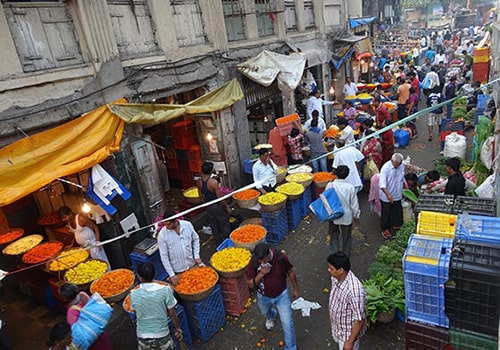
Partners of Change: Equality & Inclusivity at No Footprints
Inclusivity is the cornerstone of sustainability and our friends at No Footprints have imbibed the ethos of inclusivity in their workings.
No Footprints is an equal opportunity workplace and encourage people from underrepresented groups such as Queer Folx to apply for open roles to boost more diversity and inclusion in their organisation. Women and other gender minorities not only represent the workforce but also occupy (and have in the past) leadership roles in the organisation. They have zero tolerance towards gender discriminatory behaviour and have organised gender sensitization workshops in the past to equip everyone to identify unconscious biases that can creep into the organisation culture.
An example of something they addressed in one of the workshops was – benevolent sexism. Comments that seem like compliments but are still unsettling and equally dangerous – letting a woman know that she’ll bring a ‘feminine’ vibe to a workplace or basing a woman colleague’s value on her stereotypical role of being a wife/mother etc. To bring more inclusion to the organisation, No Footprints organised workshops with Queer experts so that everyone in the organization can learn how to support colleagues from the Queer community and build a culture that welcomes more participation from the Queer community.
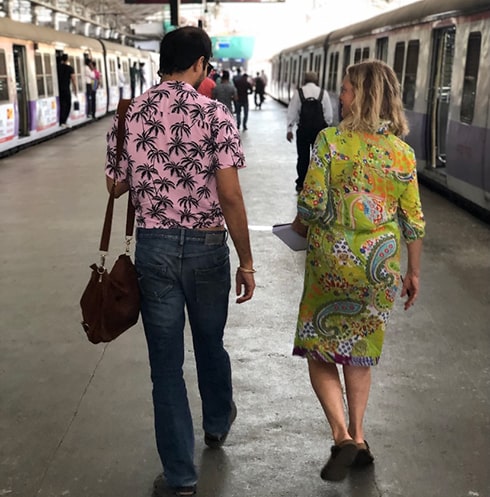
At No Footprints they are fostering a culture where everyone’s a gender equity ally in training. Their focus on communities and subcultures through their tours helped them develop – A Queer Day Out, a tour that showcases the intangible heritage of the Queer Community that was still under wraps. As allies, they wanted to mainstream the conversation of gender and queerness in tourism. The tour involves a full day of flirting with various aspects that frame queer lives of persons in the city. Tourists gain an insight into the Queer culture of the city. All walk leaders for this tour are Queer individuals so the guests will have an opportunity to hear about their relationship and history with the city.
No-Footprints has been recognised for their efforts towards inclusion and representation and community led stories. In 2020 they won the Best Tour Operator (Gold) at Outlook Responsible Tourism Awards and in 2021 they received both Best in India and the Global Award for Inclusion and Diversity in Tourism.
We are proud to partner with No-Footprints for our tours in Mumbai and Delhi.
Write to us to learn more about the tours offered by No-Footprints.
Explore
Bikaner – A rare gem of Rajasthan
Contemporary Bikaner is in the transformation phase – People are adopting modern architecture for their large houses; traditional shops are getting renovated as grand showrooms; famous Bikaneri bhujia, papad and rasgullas are being marketed in modern vacuum based packets, several national and international shopping brands are opening their outlets in the upcoming malls in the city.
All said and done, Bikaner still exudes the old world charm with golden sand dunes, striking red sandstone forts, stunning palaces, beautiful havelis and of course the National Research Centre on Camels.
It no longer remains a one-night destination, rather even two full days of exploring the city and its surroundings might fall short to do justice to one of the rare gems of Rajasthan.
“Apart from doing sightseeing of Junagarh Fort, Lalgarh Palace and the National Research Centre, one should not miss exploring the old city for at least 2 to 3 hours” says Rishabdev Singh, a local of Bikaner. There are narrow, winding streets concealing a number of fine havelis and a couple of Jain temples inside. The colourful shopping venues like Kote Gate, Station Road Market and Mahatma Gandhi Road Market are full of intricately done handicraft items, pretty kundan jewellery, leheriya sarees, gorgeous footwear (jootis / mojris), and cotton fabrics. While wandering in the old city one can also enjoy tasting the street food of Bikaner like Bikaneri Bhujia, Raj-Kachori, Ghewar, Kesar Feni, Pakodi etc.
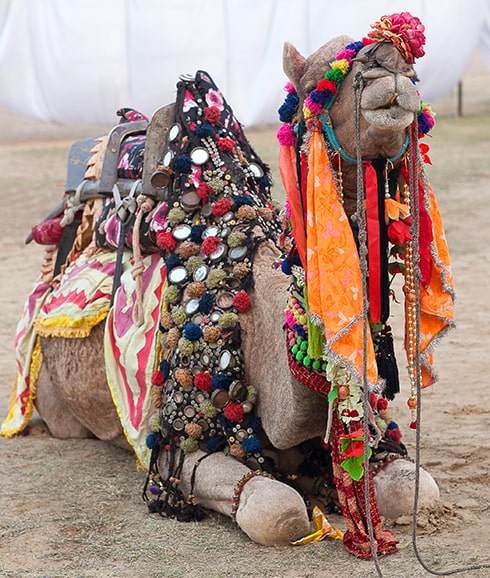
Best time to visit
Being located in the Thar Desert, summers are very hot in Bikaner with the temperature going up to around 46 °C during day. Monsoon season starts from July and lasts till November. The atmosphere is humid and rainfall is rare in this city. While the best time to visit Bikaner is between the months of October and March.
Fairs and Festivals
It is also between these months that one can witness and experience two spectacular festivals in the city.
Kolayat Fair: It is the most popular fair which is organized in the Indian month of Kartik (October-November) every year at the banks of Kolayat Lake located 50 km away from the city. People visit this fair and take a dip in the Lake on the full moon day during this festival.
Camel Festival: It is a famous festival celebrated in Bikaner every year in the month of January. Rajasthan Government’s Department of Tourism, Art and Culture organizes this festival which has spectacular displays of camels dressed in vibrant bridles, traditional necklace and heavy anklets showing off wonderful footwork to the lovely tunes on desert sands.
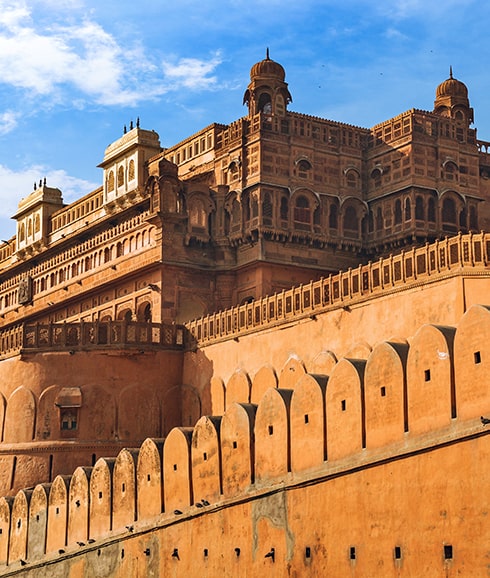
Sites to visit in and around the city
Begin your day with a visit to the Junagarh Fort that is unique in its construction on a desert plain instead of a hilltop. A moat surrounds the fort and its interiors are full of beautifully decorated palace, pavilions, gardens, and gracefully carved pillars and balconies. Visit the Museum inside the fort that houses a rich collection of royal regalia and relics including manuscripts and arms. Visit the colourful and bustling Markets of Bikaner in a local auto-rickshaw, also popularly known as Tuk-Tuk. Here you can still feel the medieval charm exuding from the surging lanes and cheerful folk. Explore different sights including old havelis and temples. At the end of the tour visit National Research Centre on Camel, a one-of-a-kind institution in India that is responsible for producing superior strains of camels for both domestic and military use.
Next day, you can visit the Karni Mata Temple at Deshnoke (30 km from Bikaner), a unique temple dedicated to an incarnation of Goddess Durga. The temple is renowned for its unusual residents of 20,000 rats that the devotees and priests worship and feed grains, milk, sweets, and coconuts in shells from large metal bowls. Time permitting one can also visit Gajner Wildlife Sanctuary located at a distance of about (32 km from Bikaner) with a lunch stop at the Mirage Restaurant of Gajner Palace. The lake in this wildlife sanctuary draws a variety of bird species. The residential species include wildfowl, deer, antelope, nilgai, chinkara, black buck, desert fox and wild boar.

Handicrafts and arts
The rich heritage of Bikaner can be seen even today in its exquisite handicrafts and arts that have stood the test of time. Kundan is one of the most famous types of ancient and traditional form of jewellery that is adorned with gemstones and gold foil. It is considered to be royal because its production is believed to have been originated in the royal courts of Rajasthan centuries ago.
The women of Meghwal community in Bikaner are pioneers of Kashidakari, a kind of embroidery used to decorate shawls, handkerchiefs, bedcovers, cushions and bags. Bikaner also offers wide variety of sarees and lehengas (long skirt), the more famous ones include Leheriya – the vibrant and lightweight, perfect for a party; Bandhani, Sanganeriya and Gharchola. If you want a royal look in a lightweight, easy to carry saree, then gharchola is your deal. Authentic camel leather mojris in a variety of colours is a speciality of Bikaner. These ethnic shoes go perfectly with the Indian wear or even western wear like jeans. Amazing designs, light and comfortable- these mojris are a real treat for your feet and eyes alike.
Nohar region in Bikaner is famous for producing painted pottery. The lac colors used in this art are complimented by the golden shade representative of the golden sand of the desert. This particular attribute makes it a unique piece of art. Usta art, which originated in Iran was brought to Bikaner in the royal patronage of Maharaja Rai Singh to perform design work at the famous Junagarh Fort. This art of engraving and embossing transformed into a new stream in Bikaner. Meenakari (painting and colouring metal & ceramic surfaces using enamel) on camel hide, golden and meenakari and paintings in palaces havelis of Bikaner are some of the multidimensional forms of this art.
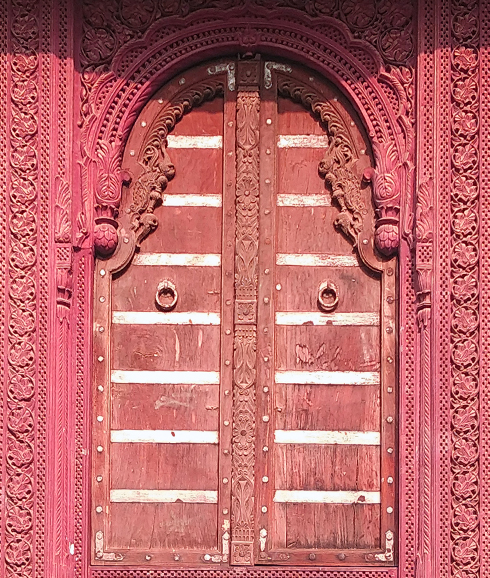
Stays we recommend
Narendra Bhawan: Narendra Singhji built the opulent Narendra Bhawan Bikaner as a tribute to his recollections of his trips to far-flung and nearby locations. The Bhawan was unconventionally designed and gradually evolved into a portrait of its original occupant. Welcoming caverns, rich velveteen fabrics, elegant chiffons and pearls, and remnants of Bombay’s Art-Deco movement, all added to the cornucopia that led to the creation of his palace-residence.
Gajner Palace: One of the most sought-after heritage buildings in the nation is Gajner Palace, which is only 30 minutes from Bikaner. This lovely home is constructed of red sandstone and is situated near the Gajner wildlife sanctuary and the shores of Lake Gajner. During the British Raj, it served as a retreat for distinguished visitors; today, it is one of the best heritage hotels.
Accessibility
Bikaner is best accessed from Jaipur or Jodhpur, both of which are well connected by air with the major cities in the country.
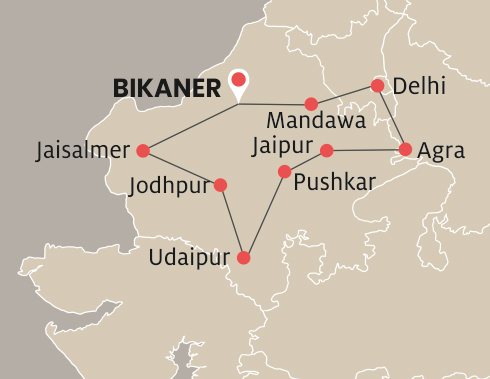
Weaving it into an itinerary:
Delhi – Mandawa – Bikaner – Jaisalmer – Jodhpur – Udaipur – Pushkar – Jaipur – Agra – Delhi
Reach out to us for a detailed itinerary to fit your clients’ needs.
Festivals to look out for
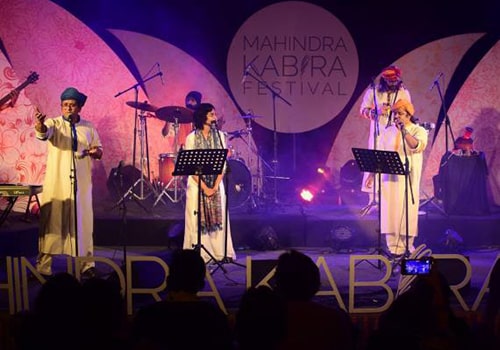
Celebrate ‘Kabir in Every Sense’ at the sixth edition of Mahindra Kabira Festival, Varanasi
India is a country of diverse cultures and religions. While the world is already fascinated by the efforts we make to celebrate these festivals, we have gradually become more receptive to the idea of festivals celebrating literature, art, and culture. People travel from all over the world to learn and appreciate the vibrant and resplendent cultural festivals that bring them together from different walks of life.
One such festival is the Mahindra Kabira Festival which is celebrated every November on the revered ghats of Varanasi. Varanasi, the birthplace of the mystic poet Kabir from the 15th century, comes alive with this annual musical celebration. 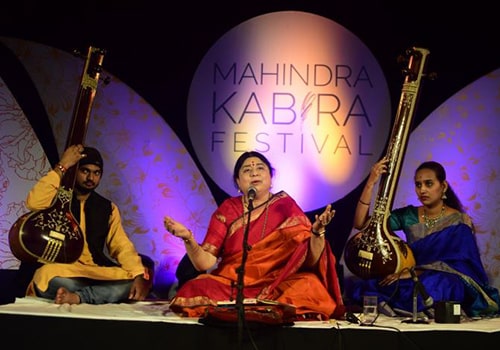 The Mahindra Kabira Festival is returning with a two-day programme of music, literature, talks, and local experiences to honour the inclusive philosophy and the lyrical aspect of his teachings. An enlivening experience featuring live performers, boat excursions, the iconic aarti on the River Ganges, local cuisine, and heritage walks. Being one of India’s ‘green festivals’, the Mahindra Kabira Festival strives to achieve a 100% green status. The festival will take place from 18th to 20th November 2022.
The Mahindra Kabira Festival is returning with a two-day programme of music, literature, talks, and local experiences to honour the inclusive philosophy and the lyrical aspect of his teachings. An enlivening experience featuring live performers, boat excursions, the iconic aarti on the River Ganges, local cuisine, and heritage walks. Being one of India’s ‘green festivals’, the Mahindra Kabira Festival strives to achieve a 100% green status. The festival will take place from 18th to 20th November 2022.
The Mahindra Kabira Delegate Package gives visitors the freedom to choose from a one-day package, a two-day package to a comprehensive experience including accommodation. Each delegate will receive an immersive experience of the festival and the chance to relive history in one of the oldest cities in the world.
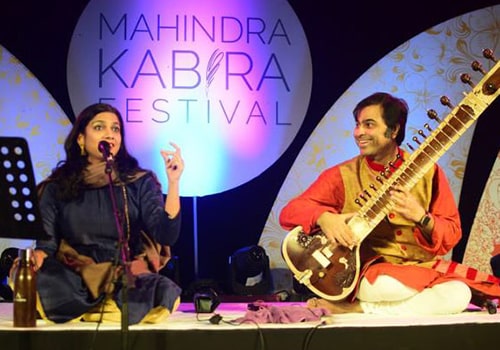 For further information on the festival, please click here.
For further information on the festival, please click here.
You may also visit their website: www.mahindrakabira.com
RESOURCES
SITE LINKS
CONTACT US
+ 91 (124) 4563000
Tower B, Delta Square, M.G. Road, Sector 25, Gurgaon - 122001, Haryana, National Capital Region of Delhi, India


